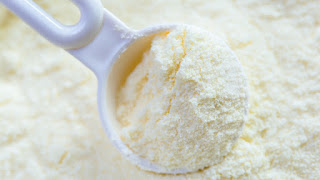Global Organic Milk Market 2021: Industry Size, Share, Analysis and Forecasts, 2021: Hexa Research
For a product to be called organic, it has to be produced according to a
number of rules that define a minimum standard. Organic cows must eat a
natural, grass-based 100% organic diet, and not pushed beyond their natural
limits. Milk is among the most highly regulated and safest foods available.
Across the world, Milk is considered a completely nutritious food, and is
especially recommended for children, adolescents and pregnant and lactating
women.
Today, organic milk is stared as a healthier alternative to conventional
milk. According to the United States Department of Agriculture, organic milk is
defined as milk from cows that have been exclusively fed organic feed, have not
been treated with synthetic hormones, are not given certain medications to
treat sickness, and are held in pens with adequate space.
Organic milk has been found to be rich in omega 3, vitamins, CLA
(conjugated linoleic acid- a type of fat that may prove to be one of most
potent cancer fighter) and antioxidants. Apart from the health benefits,
Organic milk also addresses environmental concerns and animal welfare issues.
In general, all livestock used to produce organic milk must be maintained using
the methods of organic farming as defined in the jurisdiction where the milk
will be sold, and generally must be certified in order to be marketed as
organic.Organic milk is produced on organic dairy farms according to the USDA
organic practices.
Browse Details of Report @ https://www.hexaresearch.com/research-report/organic-milk-market
The global organic milk market share is segmented on the basis of
product type, and application. On the basis of product type, the global market
share is classified into organic whole milk, organic 2.00% milk, organic 1.00%
milk, organic fat-free milk, and others. Whole milk has slightly less than 4
percent fat. One cup has 150 calories, about half from fat, plus vitamin D and
about 300 milligrams of calcium. Whole, reduced-fat, and skim milk all provide
similar amounts of protein, calcium, and vitamin D.
A cup of 2 percent milk has 120 calories, about a third from fat. A cup
of 1 percent milk has 100 calories, about a fifth from fat. A cup of Nonfat or
skim has 80 calories, none from fat. And how does a company create fat-free
half-and-half by adding stuff such as corn-syrup solids, artificial color, and
sugar to nonfat milk. On the basis of application, the global market share is
classified into children, adult, and aged.
Geographically, the global market share is classified into North
America, China, Europe, Japan, India, and Southeast Asia. The key players are
Arla, Living Planet, Mengniu Dair, China Shengmu Organic Milk Limited.,
Vecozuivel, Daioni, Organic Valley, Fonterra Co-operative Group, and Yili.
About Us:
Hexa
Research is a market research and consulting organization, offering industry
reports, custom research and consulting services to a host of key industries
across the globe. We offer comprehensive business intelligence in the form of
industry reports which help our clients obtain clarity about their business
environment and enable them to undertake strategic growth initiatives.
Contact Us:
Ryan
Shaw
Hexa
Research
Felton
Office Plaza
6265
Highway 9
Felton,
California 95018
United
States
Phone:
+1-800-489-3075
Email:
sales@hexaresearch.com
Website
- http://www.hexaresearch.com/
Visit Our Blog - hexaresearch1.blogspot.com


Comments
Post a Comment